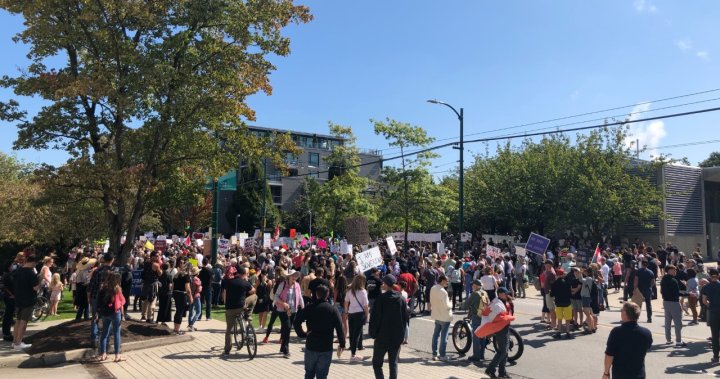The longer the influenza virus existed in a certain community, the less lethal the sickness was. An epidemiological study cited by Barry in “The Great Influenza” noted that “the virus was most virulent or most readily communicable when it first reached the state, and thereafter it became generally attenuated.”
Experts say there’s this natural progression where a virus often — but not always — becomes less lethal as time wears on. It’s in the best interest of the virus for it to spread before killing the host.
“The natural order of an influenza virus is to change,” Barry told The Post. “It seems most likely that it simply mutated in the direction of other influenza viruses, which is considerably milder.”
By 1920, the influenza virus was still a threat, but fewer people were dying from the disease. Some scientists at the time started to move on to other research. Barry wrote that William Henry Welch, a famous pathologist from Johns Hopkins who was studying the virus, found it “humiliating” that the outbreak was passing away without experts truly understanding the underlying cause of the disease.
What Welch didn’t predict was that the virus never truly went away. In 2009, David Morens and Jeffery Taubenberger — two influenza experts at the National Institutes of Health —
co-authored an article with Anthony S. Fauci explaining how the descendants of the 1918 influenza virus have contributed to a “pandemic era” that has lasted the past hundred years. At the time the article was published, the H1N1 influenza virus in public circulation was a fourth-generation descendant of the novel virus from 1918.
“All those pandemics that have happened since — 1957, 1968, 2009 — all those pandemics are derivatives of the 1918 flu,” Taubenberger told The Post. “The flu viruses that people get this year, or last year, are all still directly related to the 1918 ancestor.”
Because of this, the 1918 influenza outbreak doesn’t come with a neat bookend. Society moved on, but the virus continued in some form or fashion.
“We are living in a pandemic era that began around 1918,” Taubenberger wrote with Fauci and Morens
back in 2009 for the New England Journal of Medicine. “Ever since 1918, this tenacious virus has drawn on a bag of evolutionary tricks to survive.”
We continue to turn back to the 1918 outbreak as a point of comparison, said Jeremy Greene, a historian of medicine at Johns Hopkins. Some of the public health measures a hundred years ago are still put in place today. To “flatten the curve,” cities and towns have more or less shut down. That said, Greene cautions against drawing the parallels “too closely.”
There are similarities to draw between today’s pandemic and the influenza outbreak a hundred years ago. Both come from winged animals — one from birds and the other from bats. Both are respiratory viruses. Both led people to wear masks in public. Both forced cities and schools to shut down for periods of time. And, finally, in both cases, the country’s leaders exacerbated problems by ignoring the early warning signs.
Despite all that, influenza viruses and coronaviruses are
not the same. There’s very little someone can draw from influenza to then provide treatment for the infectious disease named covid-19, said Paul Offit, the director of the Vaccine Education Center at Children’s Hospital of Philadelphia.
“They’re really different viruses,” Offit added.
Influenza is consistent and relatively quick when compared with the novel coronavirus. If you get exposed to the flu, you’ll start showing symptoms in one to four days after the infection. According to the Centers for Disease Control and Prevention, it tends to take five days for those infected with SARS-CoV-2 to start showing symptoms of covid-19, but the timing can fluctuate from two days to two weeks.
The novel coronavirus is not moving on the same time frame as the 1918 influenza, Greene told The Post. Everything is longer with the novel coronavirus — the symptoms, the sickness and even the long-term complications.
Doctors are concerned covid-19 can lead to lasting cardiovascular complications.
Then there are asymptomatic carriers of the disease. That one detail makes it harder to mitigate the spread of the virus by simply taking temperatures. Symptoms are not a be-all-end-all solution to tracking the disease. With that in mind, the novel coronavirus is acting more like polio, where those with mild cases don’t know they’re sick, Greene said.
“It immediately raises a different set of problems for managing a disease,” Greene said. “One needs to relearn the way to think about who is dangerous, and that becomes, basically, everybody.”
Recognizing both the similarities and differences to past pandemics can provide a “meaningful mirror” for the present, Greene added. The million-dollar question is: What can the 1918 influenza outbreak tell us about how our current pandemic may end?
“The sad answer is not very much,” Markel said. “The operative word in this particular pandemic is ‘novel’ coronavirus. We’re learning as we go along, but we don’t really know that much.”







